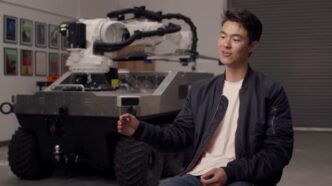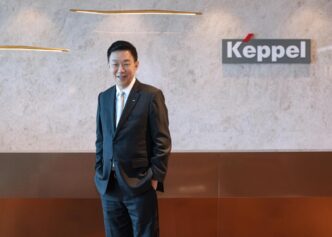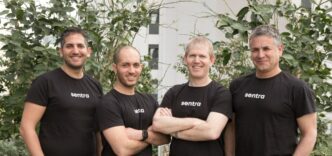The solar energy industry in the U.S. is growing fast—but there’s one big problem. There aren’t enough people to install all those panels. As the country races to meet its clean energy goals, the labor shortage is becoming harder to ignore.
According to the Bureau of Labor Statistics, the number of solar panel installers is expected to jump by 48% by 2033. That’s one of the fastest-growing jobs in the country. Yet even with this rapid growth, the solar sector is still struggling to keep up with demand.
And it’s not just about the number of workers. It’s about the nature of the job itself. Utility-scale solar farms are often built in harsh, remote places like deserts. The work is physically demanding. Installers are expected to lift and mount solar panels weighing up to 90 pounds, for hours at a time, under the sun.
These extreme conditions are exhausting and dangerous, leading to burnout, injuries, and delays in construction. That’s where Cosmic Robotics comes in—with a robot built to carry the weight.
Robots Built to Handle the Heat
Cosmic, a robotics startup led by co-founder and CEO James Emerick, has designed a machine to make solar work safer and faster. Their robotic assistant doesn’t replace human workers. Instead, it supports them—lifting the burden so people can focus on tasks that require attention, precision, and experience.
Emerick explained that the robot is not meant to take jobs away. Instead, it’s meant to open up the field to more people, especially those who might not be able to do intense physical labor. “There’s a certain physicality to it,” he said. “Bringing new tools actually opens the aperture for more people to be able to do this work.”
The robot, called Cosmic-1A, is an eight-wheeled machine topped with a robotic arm. It carries a small trailer loaded with solar panels and comes equipped with high-accuracy GPS, suction cups for lifting, and onboard cameras to navigate its environment. When the day is over, it recharges at the construction site’s depot.
A Funding Round to Spark Acceleration
To bring this vision to life, Cosmic has raised a $4 million pre-seed funding round. The investment was led by Giant Ventures, with participation from HCVC, MaC Ventures, and several well-known angel investors, including Azeem Azhar, Aarthi Ramamurthy, and Nate Williams.
This funding will help the company manufacture more robots and begin deploying them on actual solar sites before the end of the year. It’s a major milestone that puts Cosmic on the map as a startup to watch in the solar and robotics space.
The goal isn’t just to make life easier for solar workers. It’s also to speed up the entire installation process.
Currently, Cosmic-1A can install one solar panel every 30 to 40 seconds. That’s already as fast as some of the best human crews. But here’s the difference—robots don’t get tired. They can maintain that pace far longer, reducing downtime and helping crews hit more aggressive daily targets.
Boosting Efficiency on Solar Farms
Emerick believes this will transform how solar farms operate. With a robot doing the heavy lifting, a standard crew can be split into two smaller teams, each supported by a machine. That could double the number of panels installed in a day without increasing labor costs.
Installation isn’t just about speed—it’s also about precision. Cosmic-1A uses its robotic arm to place each panel within a few millimeters of the correct position. Once the panel is in place, human workers inspect it and secure it to the rack.
This division of labor allows people to focus on quality and detail while letting machines take on repetitive, back-breaking tasks. The result is a safer job site, faster installation, and a more sustainable pace for workers.
Meeting the Demands of the AI Boom
One big reason solar demand is soaring? Data centers.
With artificial intelligence workloads growing rapidly, data centers are consuming more power than ever before. Developers are racing to secure electricity supplies, and solar is becoming the go-to choice. It’s relatively cheap, quick to deploy, and widely available.
But even solar has limits—especially when construction crews are stretched thin. That’s why automation on solar farms is a big deal. Robots like Cosmic-1A could help speed up deployment timelines, allowing data centers to come online faster.
“There’s something new announced every day with data centers and energy generation,” Emerick noted. “Speed of deployment is all that really matters. You just can’t build these things fast enough.”
In that context, measuring data centers in megawatts rather than FLOPS (floating point operations per second) makes perfect sense. Energy is the new constraint, and faster solar construction is one way to remove that bottleneck.
What’s Next for Cosmic?
With fresh capital in the bank, Cosmic plans to build and test more robots throughout the year. The company is focused on refining Cosmic-1A, improving deployment speed, and preparing for broader rollout in 2026.
There’s a long way to go, but the foundation is in place. If Cosmic succeeds, its robots could become a staple on solar farms worldwide. More importantly, they could make clean energy jobs safer, more accessible, and more efficient.
And in a world racing toward renewable energy, that’s a win worth investing in.













